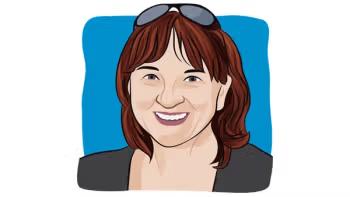
Molecular Testing; Lung Cancer Awareness
Transcript:
Philippa Cheetham, MD: We know that lung cancer can be associated with smoking. Nance has already testified to the fact that she was a smoker and often, patients who smoke live with other smokers and those that don’t smoke are exposed to passive smoking. And, of course, there’s the whole biology, the genetics, of these tumors. In somebody like Nance’s situation, is her son at increased risk for developing lung cancer? And if so, is that because of the potential risk of passive smoking, living in the same house, or is it the biology of the fact that if Mom has had a tumor, he’s more at risk of having lung cancer himself?
Leora Horn, MD, MSc: That’s a good question. There is some familial risk. I think my biggest pet peeve as a lung oncologist is this association of smoking and lung cancer because most people who are diagnosed today are either never-smokers or people who quit smoking decades ago. We don’t know all of the risk factors for lung cancer, and a common question especially in never-smokers is, “Do I have to worry about my children?” There’s one genetic abnormality, something called the germline T790M mutation, which we see in a small cohort of patients, that we do know can put patients at risk for lung cancer, similar to how BRCA puts patients’ family members at risk for breast, or colon, or prostate cancer. But for someone who is diagnosed with lung cancer later on in life and who has children, we don’t really know what the true risk is or if this is just a disease that we know can happen in—not that I’m calling you old—older patients.
Nance Neshanian: I am.
Philippa Cheetham, MD: I’m just going to end, Nance, by asking you, do your friends at the golf club and friends in the community know about your diagnosis? Do you talk about it with friends?
Nance Neshanian: Yes, and if I don’t show up one week, they march right up to me and want to know, “Where were you? Were you sick? Were you in the hospital?” Yes, they check up on me.
Philippa Cheetham, MD: And typically, we often think that patients with lung cancer look seriously ill and feel very unwell, and yet you’re the exact opposite. Are people shocked to hear the diagnosis?
Nance Neshanian: Yes, they really are. And I’ll tell you one thing that I do that maybe shows up in my age, but the other day, I was going to the post office and there was a beautiful young girl standing there with a cigarette. And I walked up to her and I said, “It’s none of my business but,” and I told her what happened to me. And I said, “You’re far too pretty to go through this.” And she looked at me and she said, “I’ve needed something to make me stop. I think you’re it.”
Philippa Cheetham, MD: Wow.
Nance Neshanian: So, you never know. You open your mouth, put your foot in it, but you try.
Philippa Cheetham, MD: Well, good on you for being such a strong advocate.
Nance Neshanian: But she was so pretty and I hated to see it. I don’t want her to go through this. It doesn’t bother me that much, but it’s not something that you would wish on anyone.
Philippa Cheetham, MD: Sure. But obviously, many people who are in their teens and 20s, they think, “It’s never going to happen to me.”
Nance Neshanian: Sure, we didn’t know.
Philippa Cheetham, MD: Well, I thank you so much for sharing your story.
Nance Neshanian: You are very welcome.
Philippa Cheetham, MD: You are truly an inspiration, not just to us in the medical profession but also to patients and caregivers watching this. So, I wish you well. I hope that the diagnosis has not affected your golf handicap, and you have done absolutely fantastically.
Nance Neshanian: The fact that I go out affects it.
Philippa Cheetham, MD: I wish you well.
Nance Neshanian: Thank you very much.
Philippa Cheetham, MD: Thank you to Dr. Horn and to Dr. Martin for weighing in on this session. Thank you so much.
Transcript Edited for Clarity




